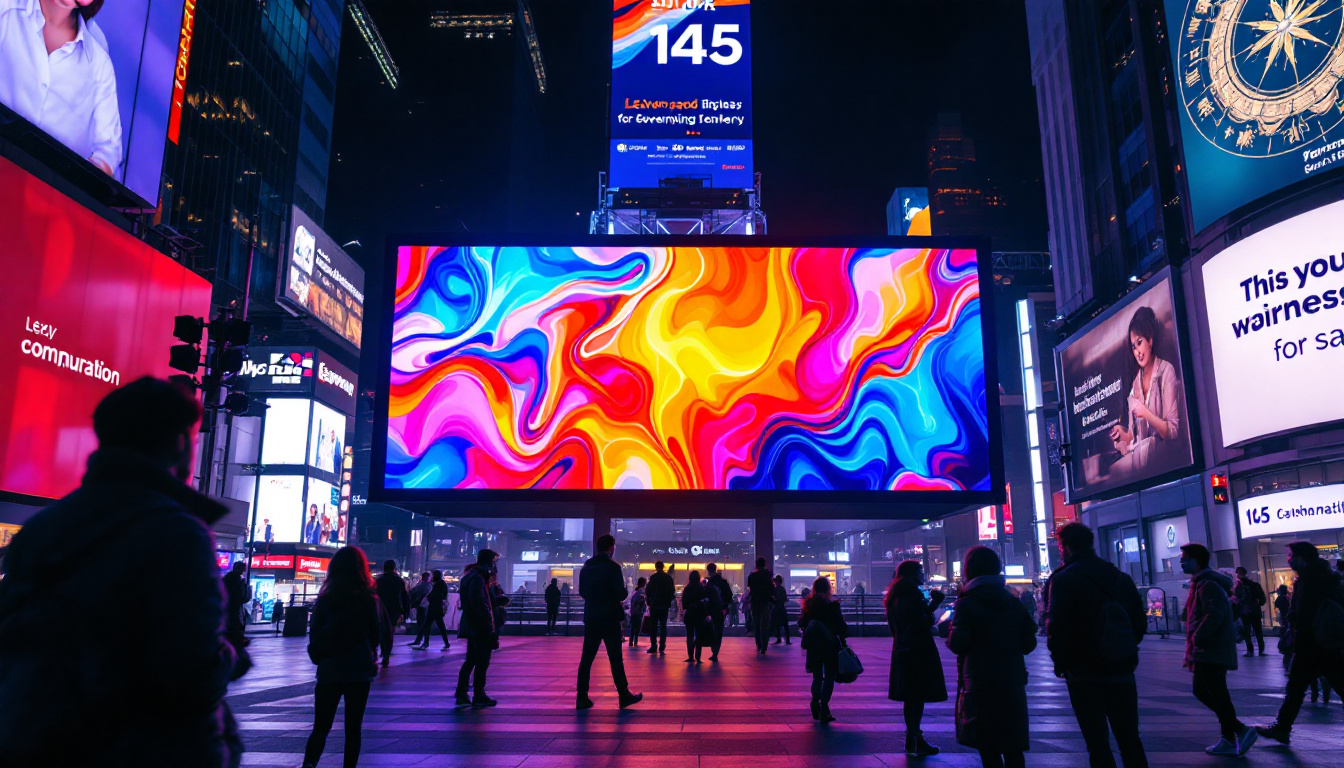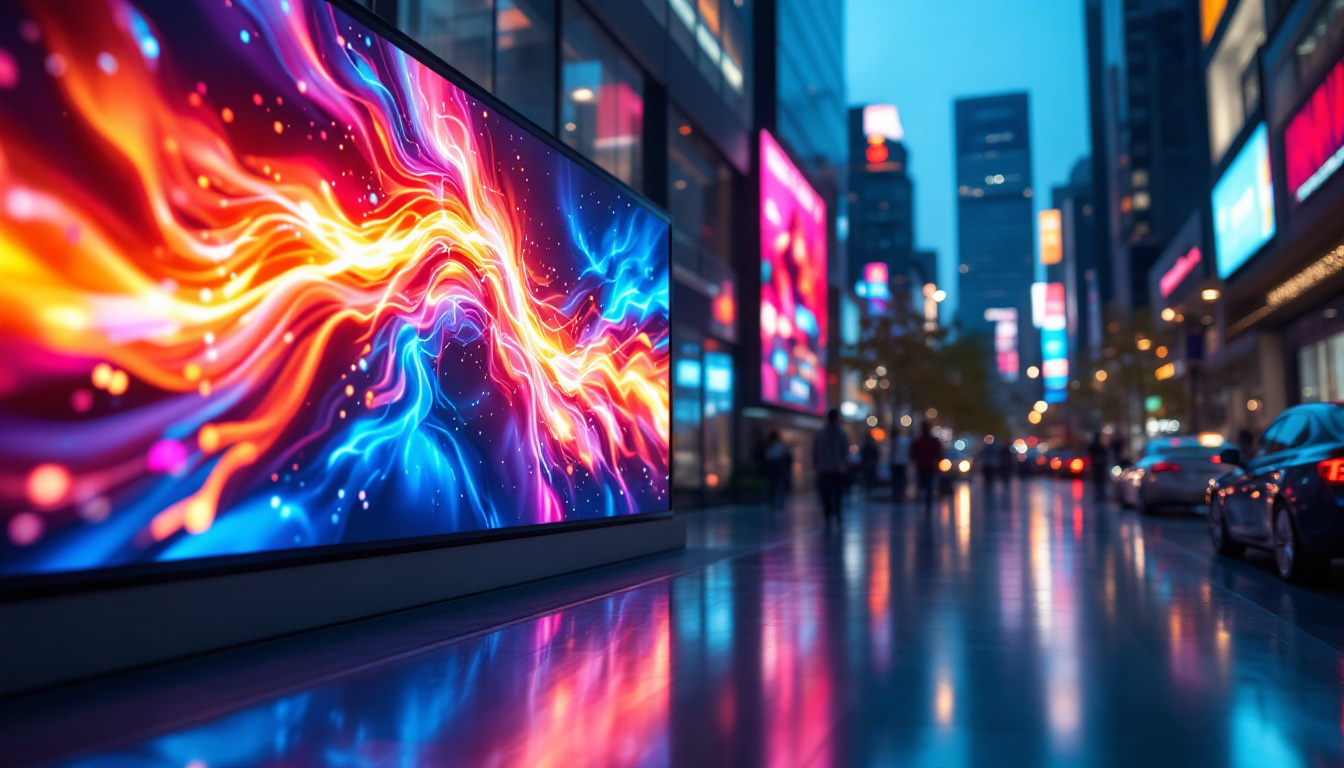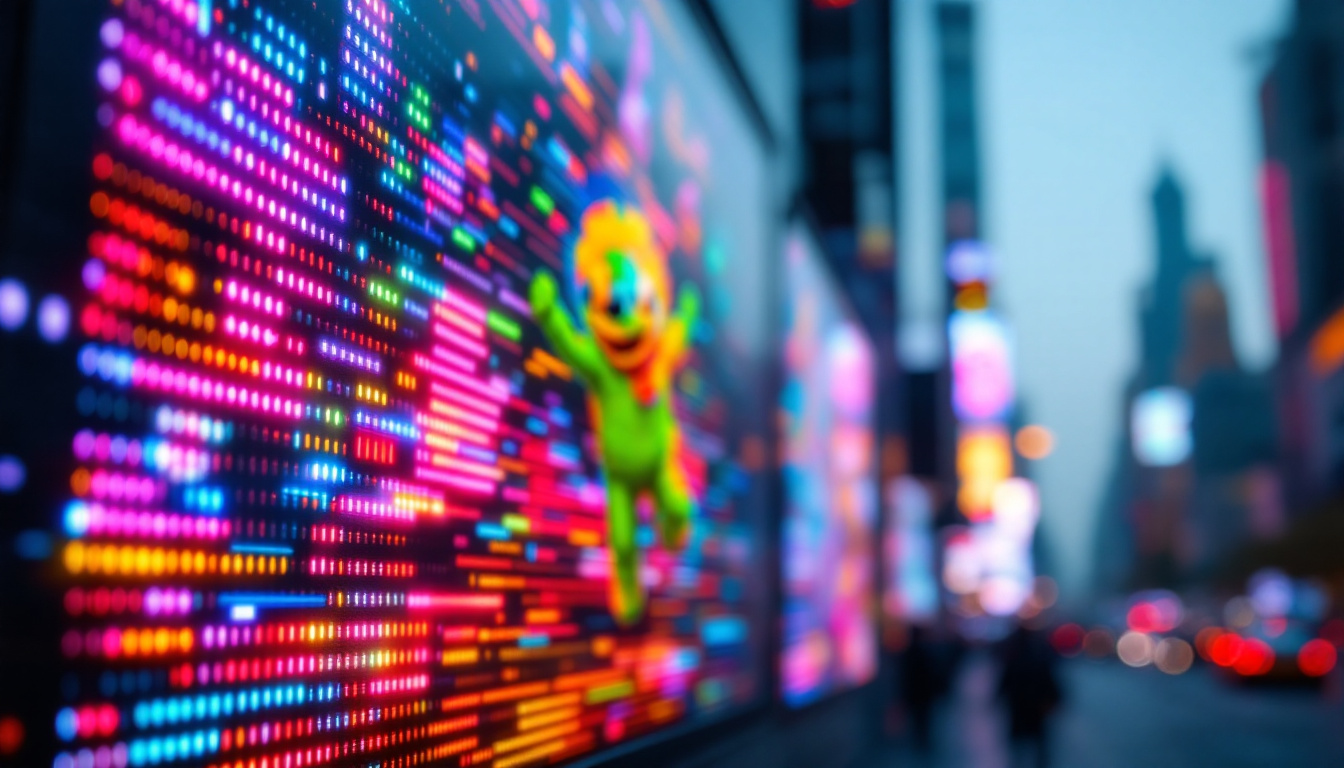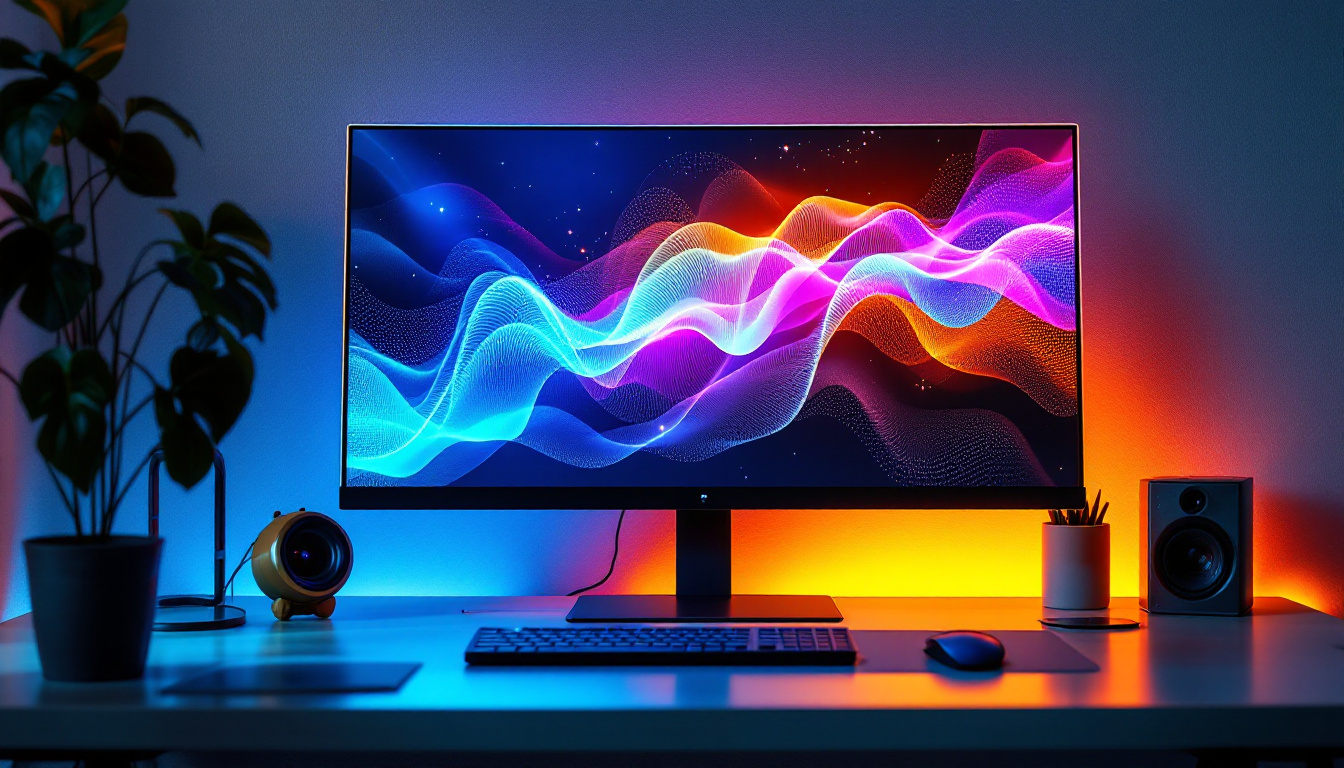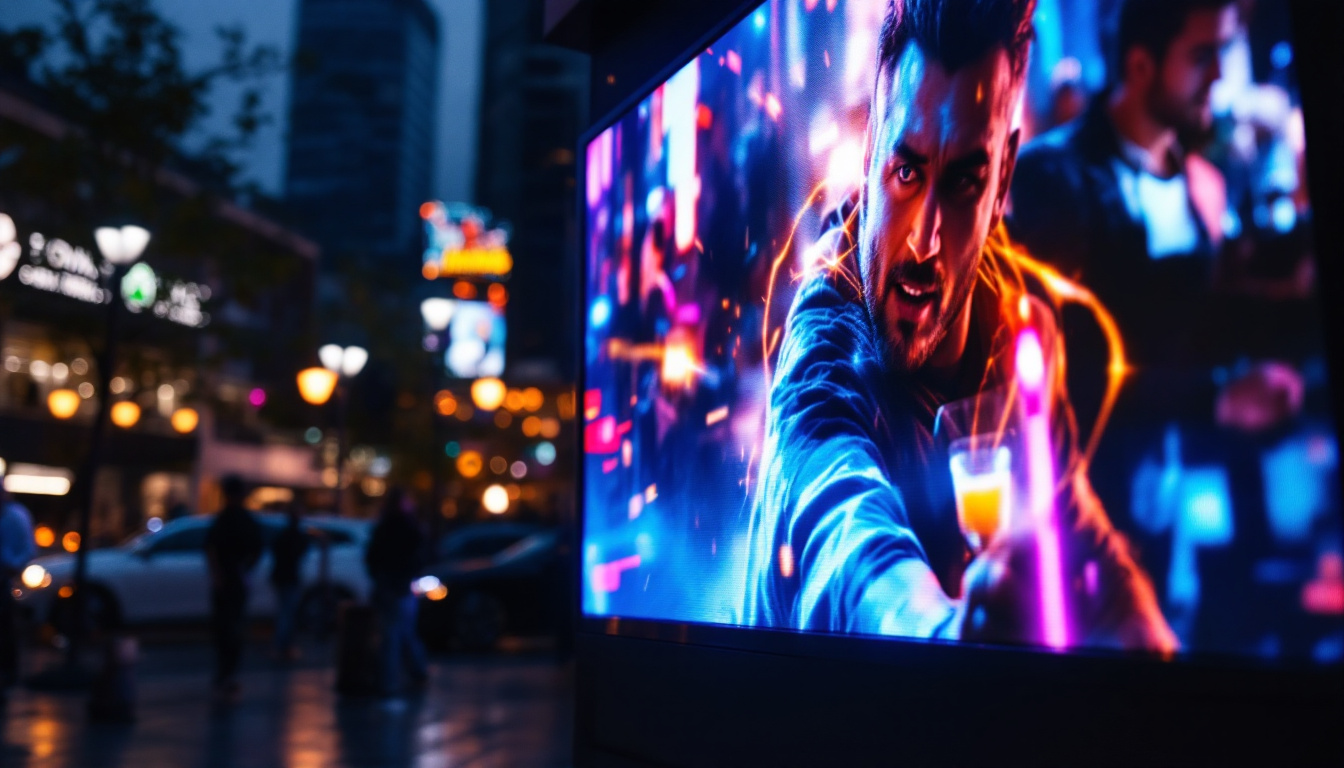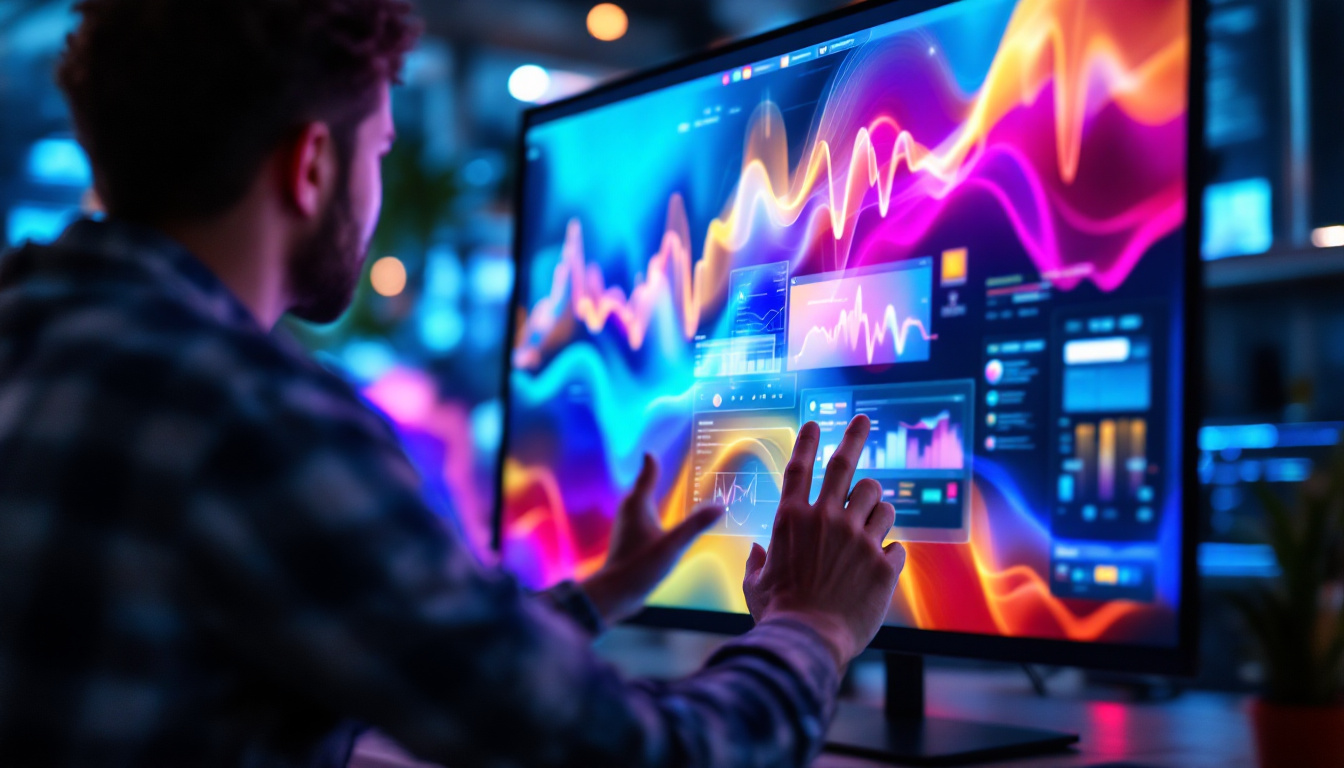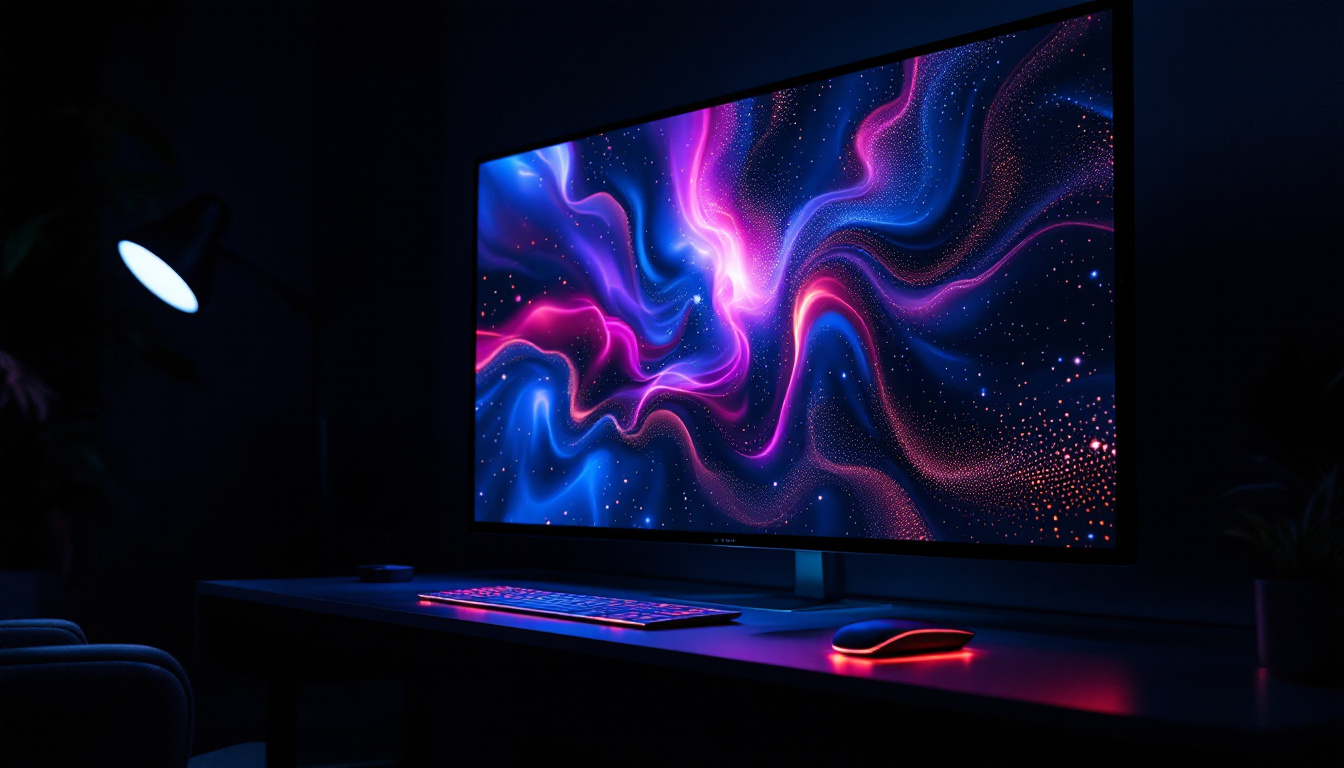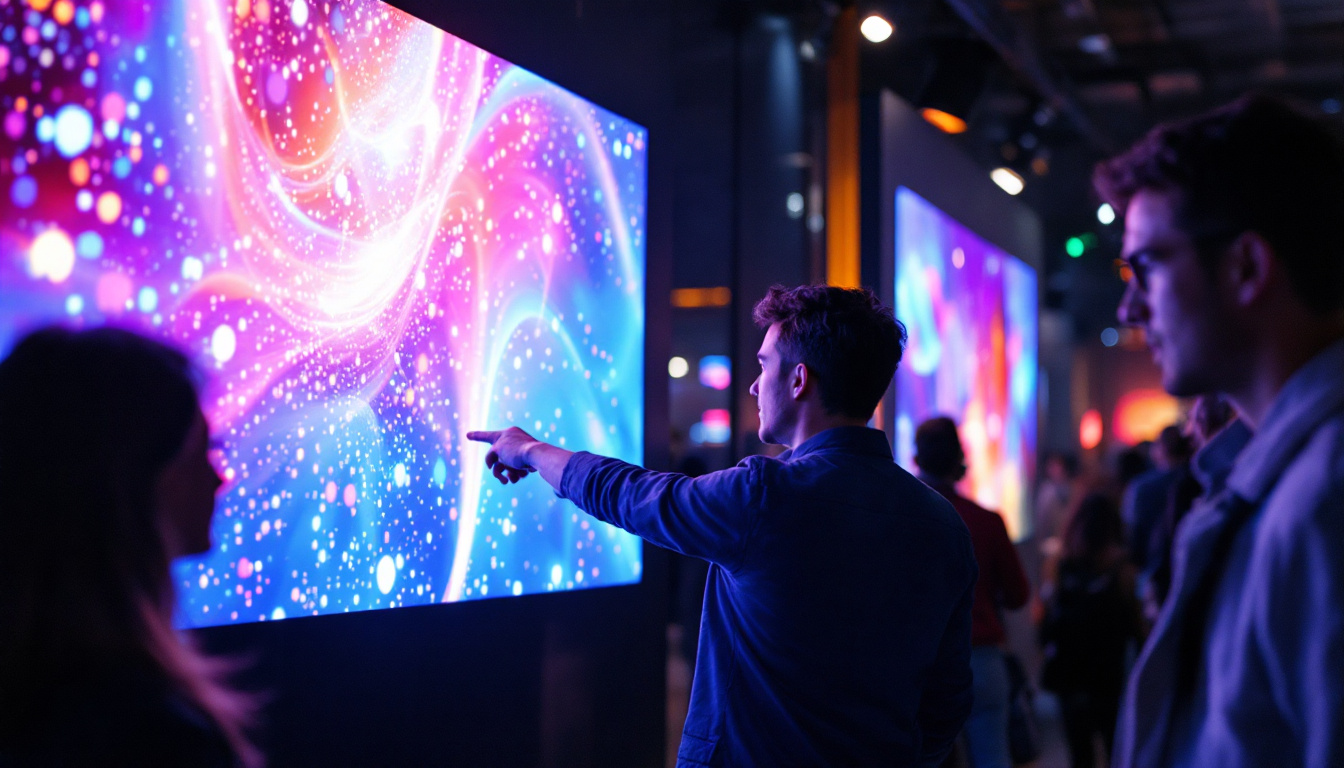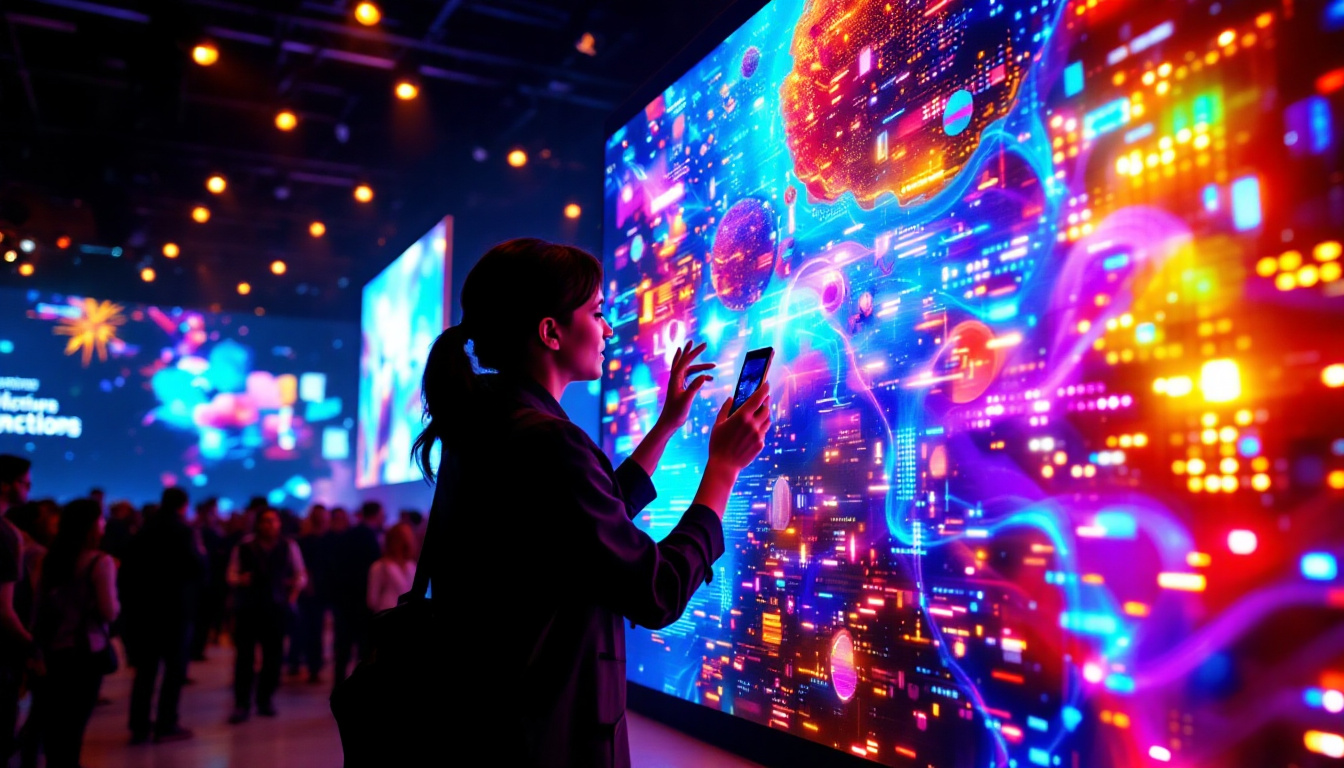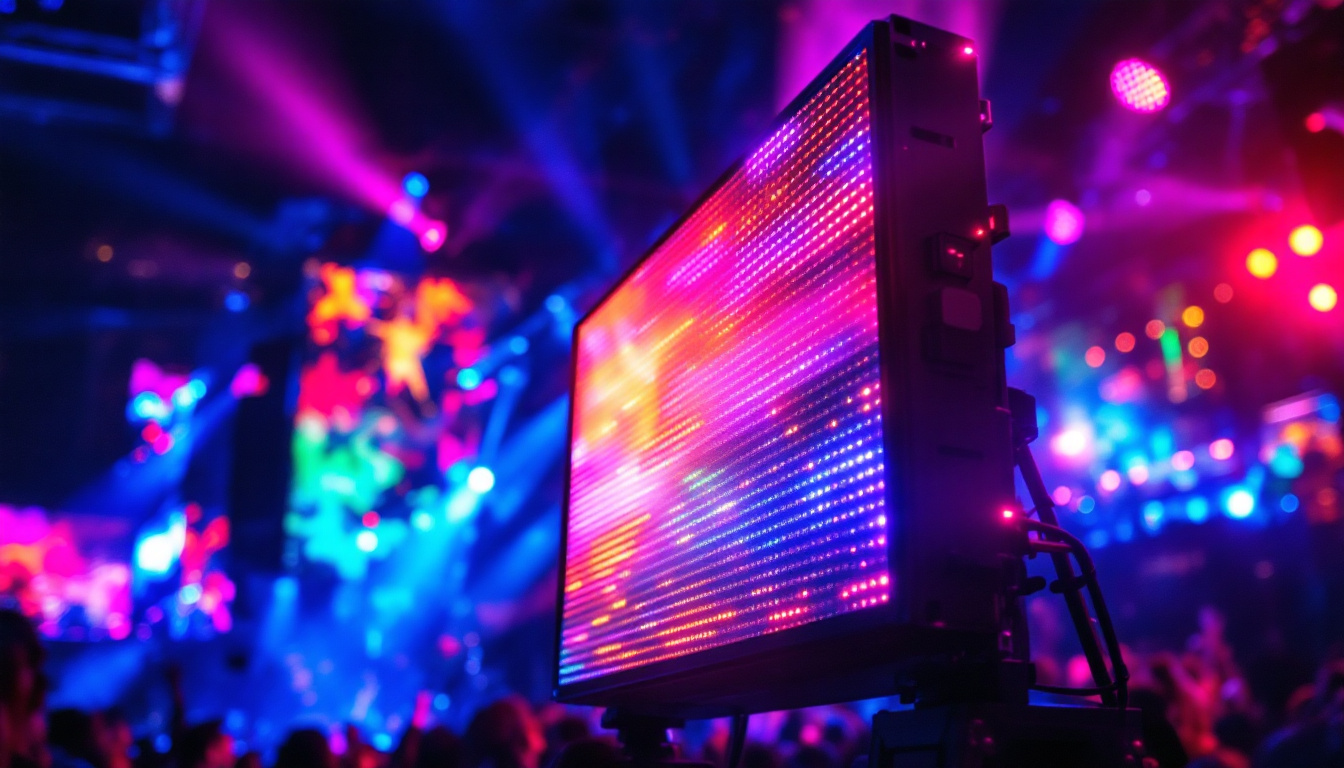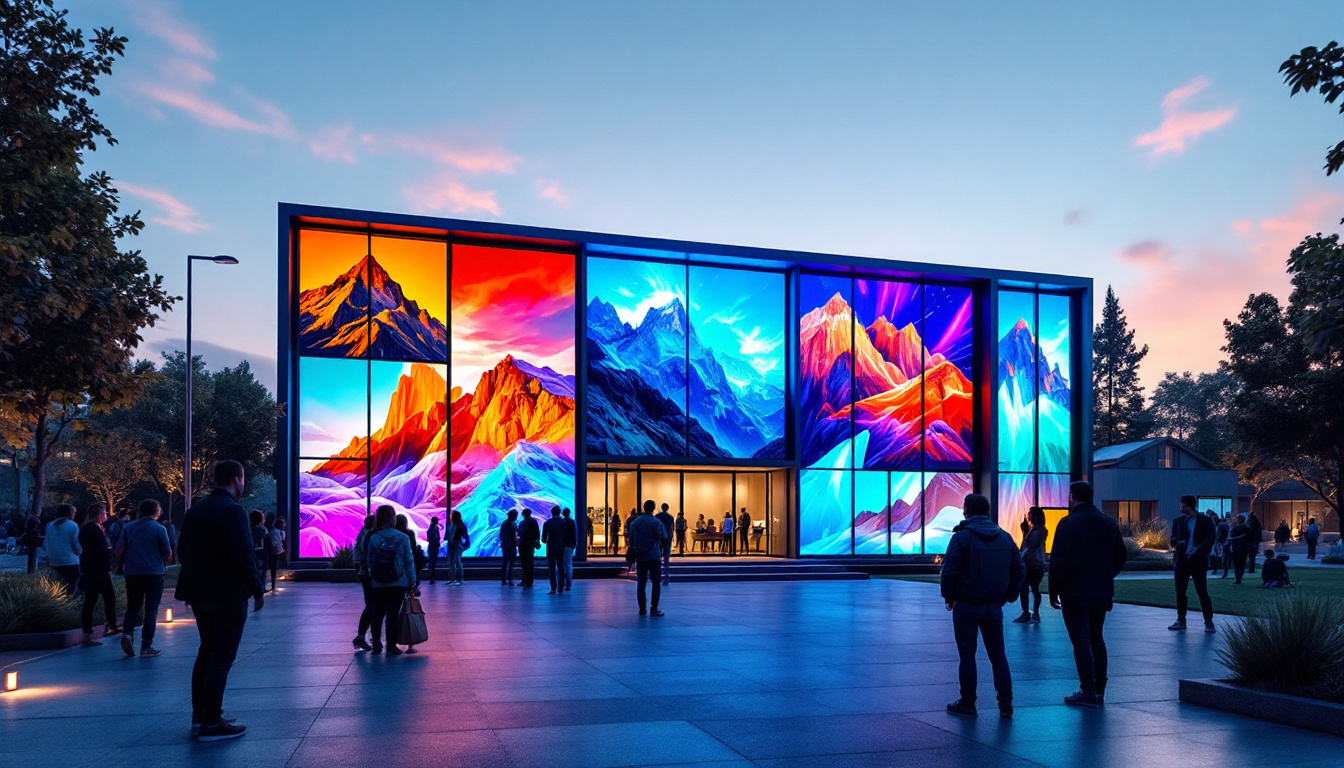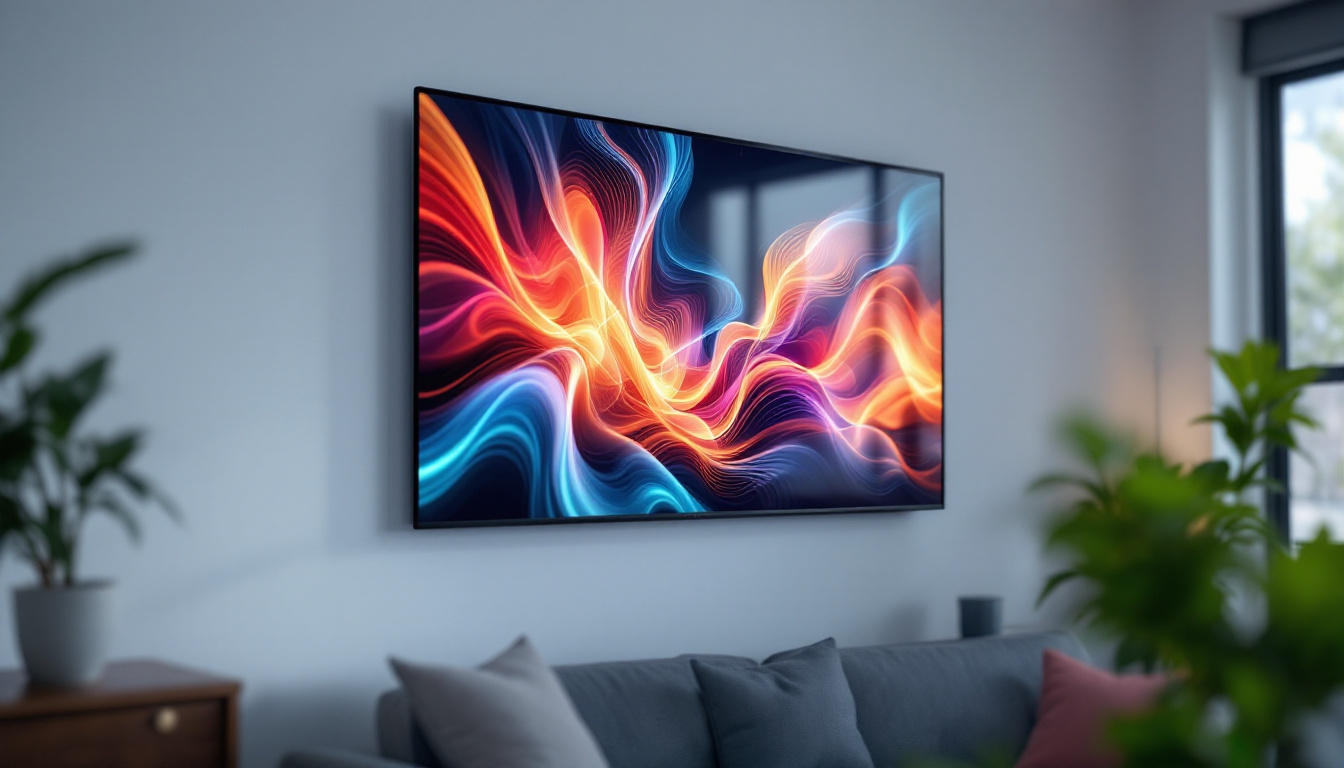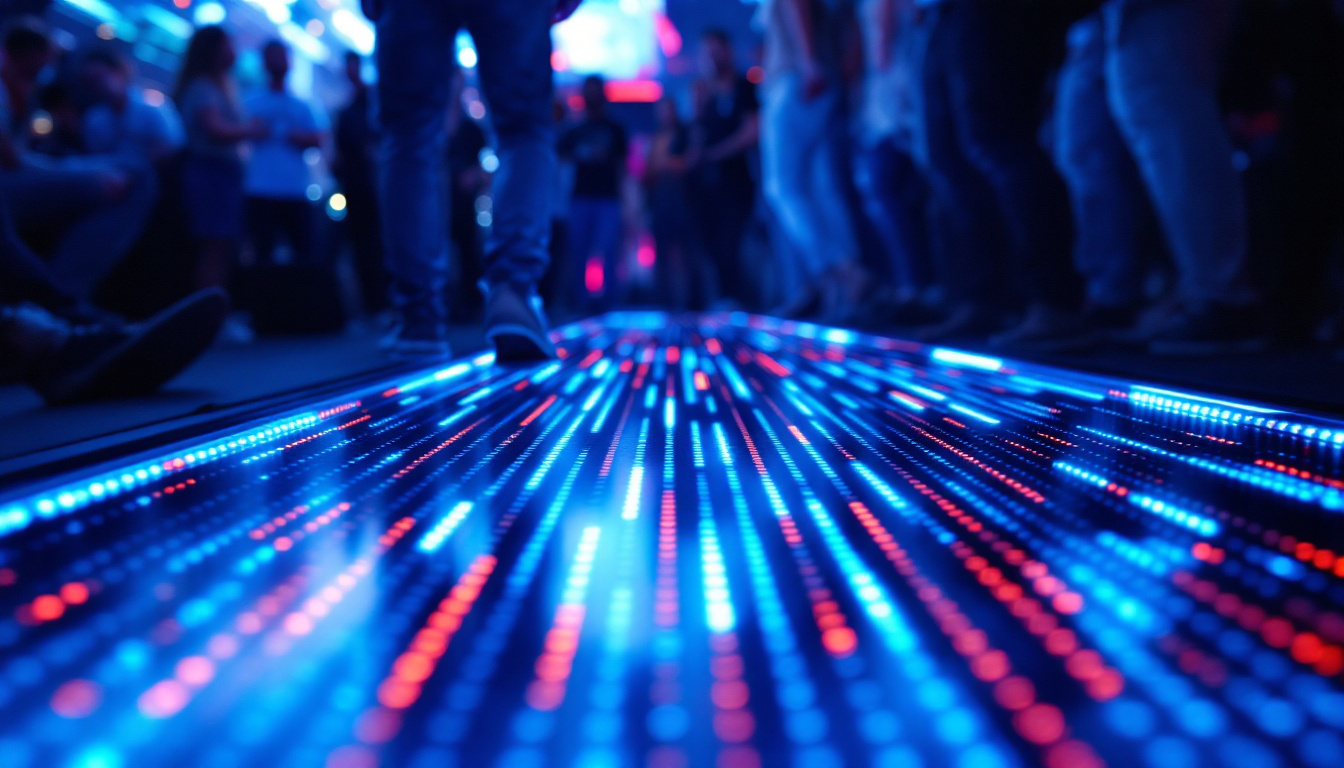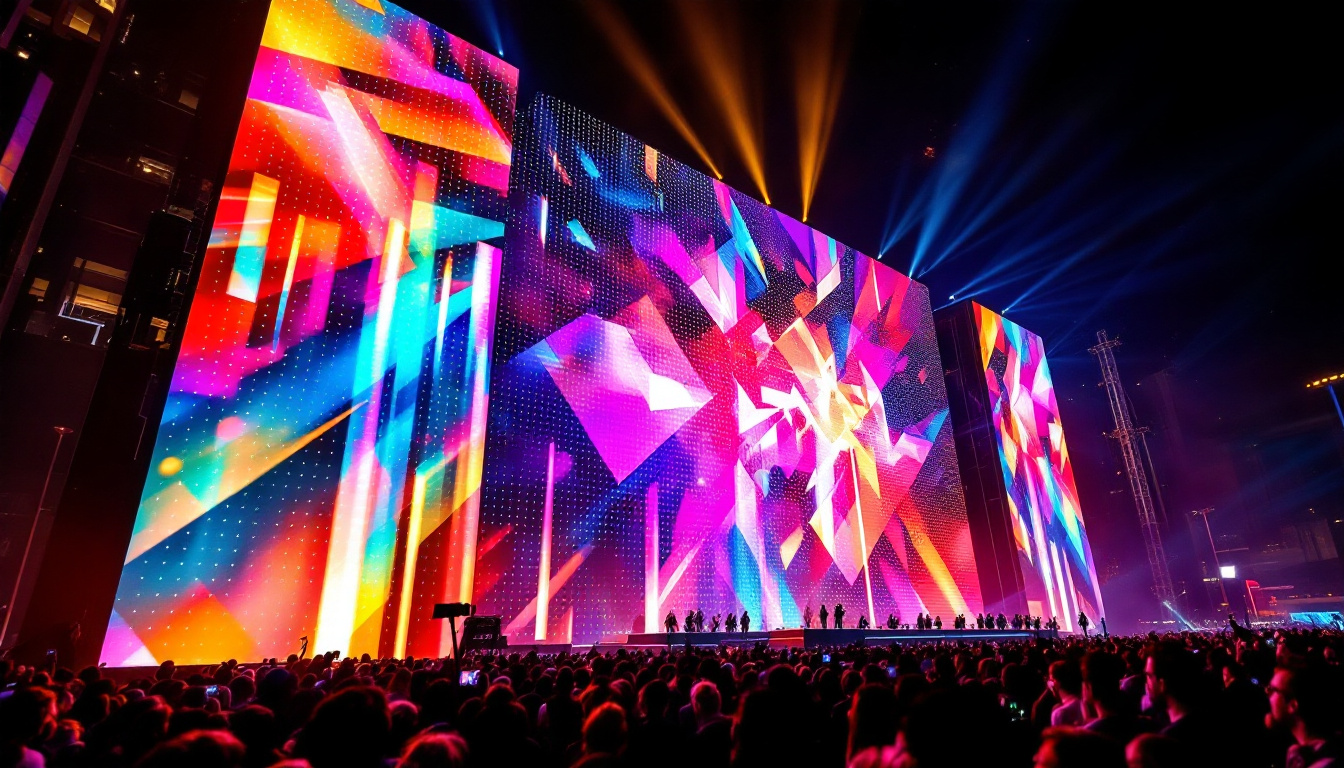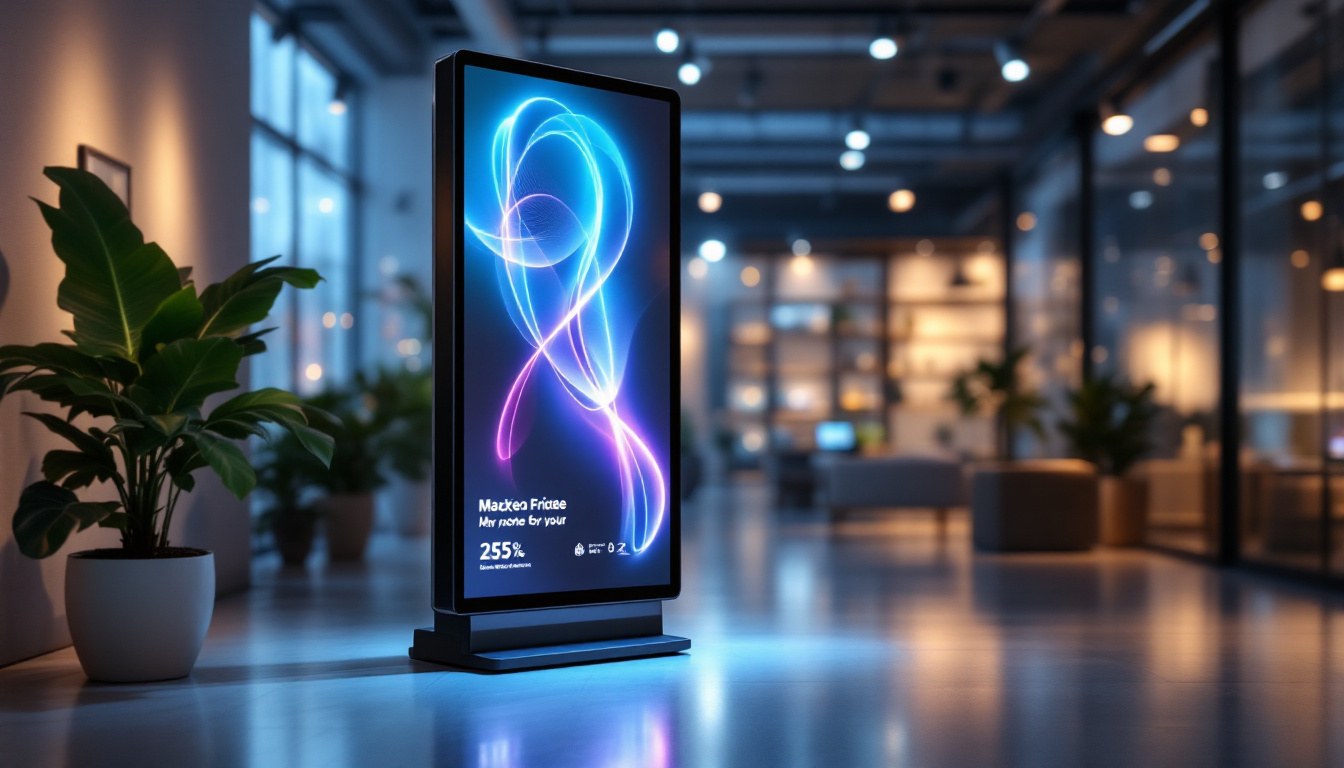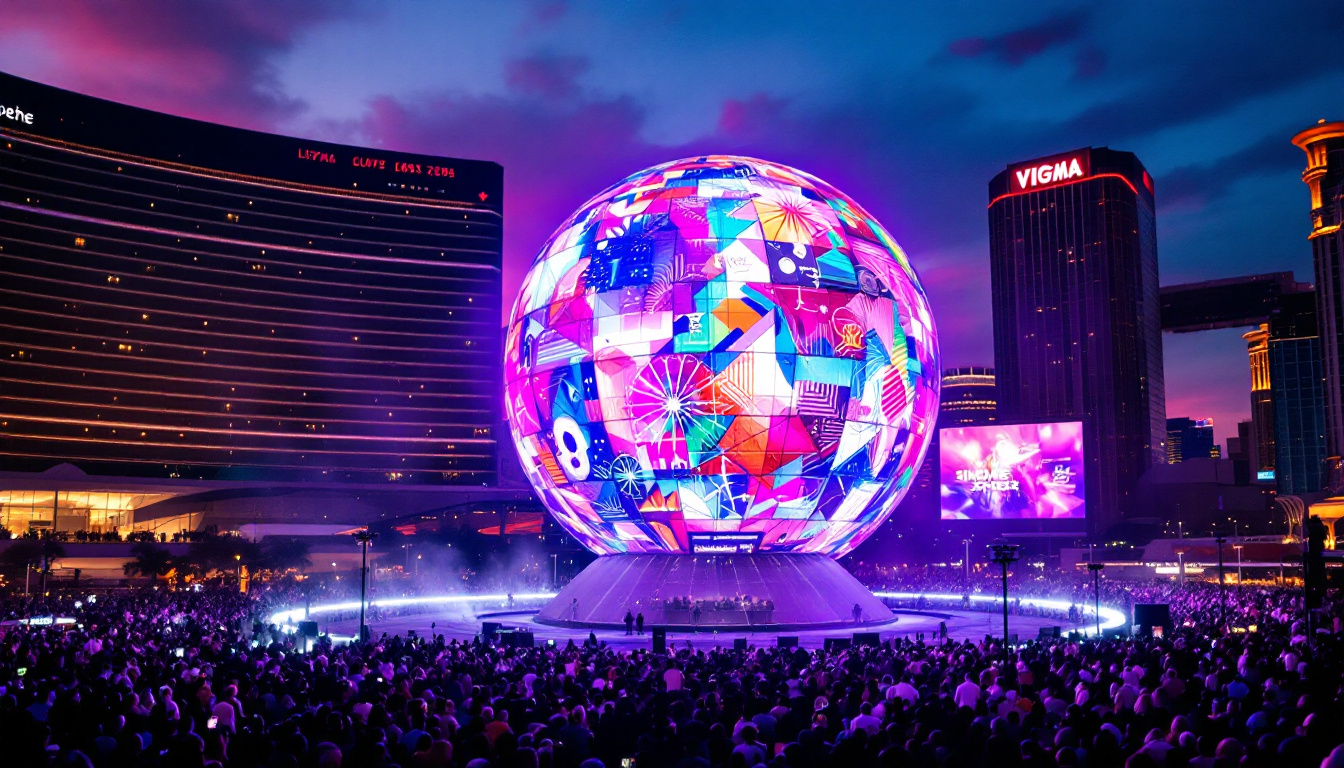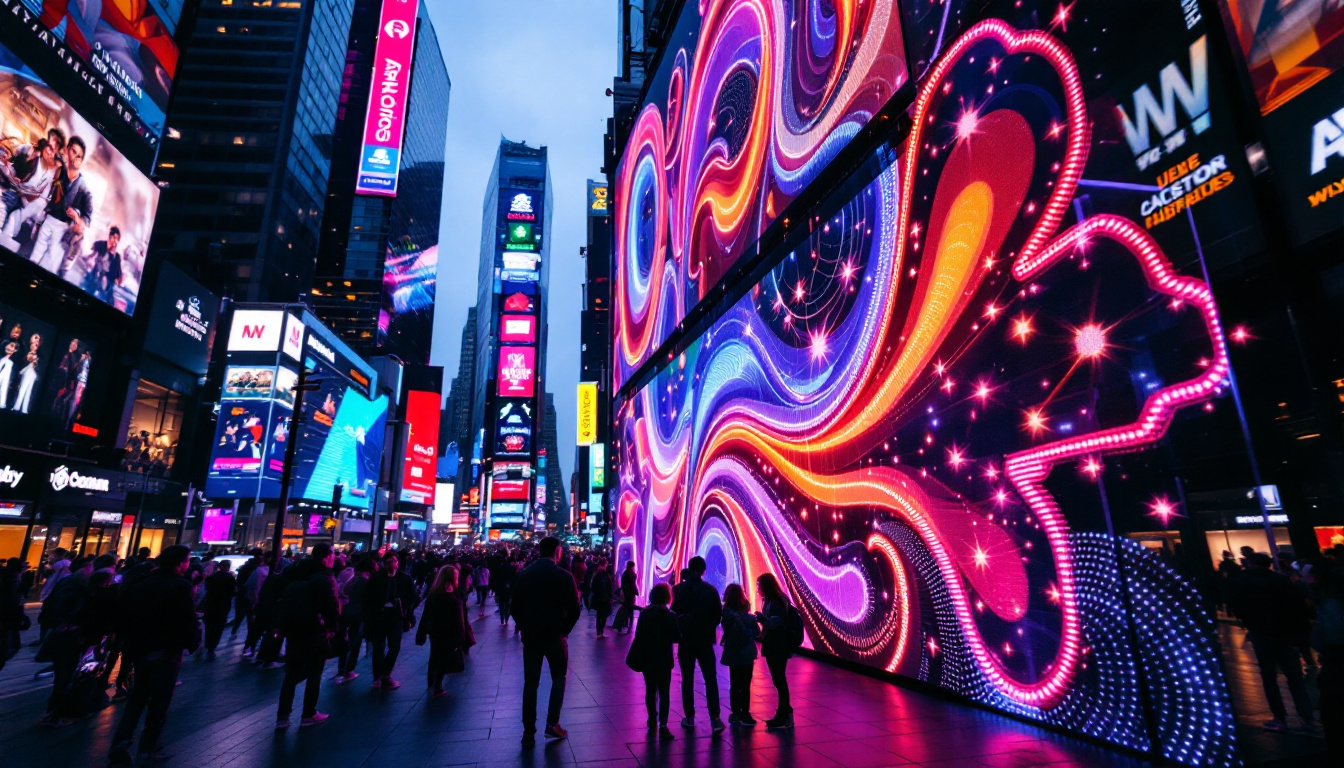In the digital age, communication and advertising have evolved significantly, and one of the most impactful innovations in this realm is the LED display. These vibrant screens have transformed the way businesses engage with their audiences, offering dynamic visual experiences that capture attention and convey messages effectively. This article delves into the intricacies of LED displays, exploring their technology, applications, advantages, and future trends.
Understanding LED Technology
LED, or Light Emitting Diode, technology is at the heart of modern display solutions. Unlike traditional display technologies, LEDs utilize semiconductor materials to produce light when an electric current passes through them. This fundamental principle allows for the creation of bright, energy-efficient screens that can be used in a variety of settings. The efficiency of LEDs not only contributes to lower energy consumption but also extends the lifespan of the displays, making them a sustainable choice for both consumers and businesses alike.
How LED Displays Work
At its core, an LED display consists of an array of tiny diodes that emit light in various colors. These diodes are grouped into pixels, which combine to form images and videos. The more pixels present in a display, the higher the resolution and clarity of the image. This pixel arrangement is crucial for applications ranging from large outdoor billboards to small indoor screens. Furthermore, advancements in technology have led to the development of high dynamic range (HDR) displays, which enhance the contrast and color accuracy, providing viewers with a more immersive experience.
LED displays can be categorized into two main types: direct view and rear projection. Direct view displays are composed of individual LEDs that are visible from the front, while rear projection displays use a light source behind a screen to project images. Each type has its own set of advantages and is suited for different environments. For instance, direct view displays are often preferred for their superior brightness and color vibrancy, while rear projection displays can be advantageous in spaces where space is limited, allowing for larger images without the need for extensive depth.
Types of LED Displays
LED displays come in various forms, each designed for specific uses. The most common types include:
- Indoor LED Displays: These are designed for use in controlled environments, such as shopping malls, conference rooms, and theaters. They offer high resolution and brightness, making them ideal for detailed visuals. Additionally, indoor displays often incorporate advanced features like touch interactivity, enhancing user engagement during presentations or advertising campaigns.
- Outdoor LED Displays: Built to withstand the elements, outdoor displays are typically larger and brighter than their indoor counterparts. They are often used for advertising on billboards, stadiums, and public spaces. These displays are engineered to resist harsh weather conditions, including rain, snow, and extreme temperatures, ensuring consistent performance and visibility at all times.
- Transparent LED Displays: This innovative technology allows for displays that can be seen through, making them perfect for retail environments where visibility is crucial. By integrating transparent LED technology into storefronts, retailers can showcase products while simultaneously displaying dynamic advertisements, creating a unique shopping experience that captures consumer attention.
Applications of LED Displays
The versatility of LED displays has led to their adoption across various industries. From advertising to entertainment, their applications are vast and continually expanding.
Advertising and Marketing
One of the most prominent uses of LED displays is in advertising. Businesses leverage these screens to showcase dynamic content that can be easily updated in real-time. This capability allows for targeted advertising, where businesses can tailor their messages based on the time of day, audience demographics, or even current events.
Outdoor LED billboards, for instance, have become a staple in urban environments, capturing the attention of pedestrians and drivers alike. The bright colors and moving images create an engaging experience that static billboards simply cannot match. Furthermore, with advancements in technology, some LED displays are now equipped with sensors that can detect the audience’s reactions, allowing advertisers to adjust their content on-the-fly for maximum impact. This level of interactivity not only enhances viewer engagement but also provides valuable data for marketers to refine their strategies.
Entertainment and Events
In the realm of entertainment, LED displays play a crucial role in enhancing the viewer experience. Concerts, sporting events, and festivals utilize large LED screens to broadcast live feeds, display graphics, and create immersive environments. The ability to synchronize visuals with audio elevates the overall impact of the event, making it more memorable for attendees.
Moreover, LED displays are increasingly being used in theme parks and attractions, where they contribute to storytelling and interactive experiences. The flexibility of LED technology allows for creative installations that can transform spaces and engage visitors in unique ways. For example, some parks have incorporated LED screens into their rides, providing real-time animations that react to the movements of the ride itself, thus deepening the immersion. Additionally, these displays can be programmed to change themes or narratives throughout the day, ensuring that repeat visitors have a fresh experience each time they return.
Information and Wayfinding
Beyond advertising and entertainment, LED displays are also essential for conveying information. Airports, train stations, and public transportation systems use LED screens to display real-time updates on schedules, delays, and other important announcements. This functionality enhances the overall efficiency of these systems, providing travelers with the information they need at a glance.
Additionally, LED wayfinding signs in large buildings or campuses help guide visitors to their destinations, improving navigation and user experience. These displays can be programmed with interactive maps and touch-screen capabilities, allowing users to search for specific locations or services. In educational institutions, LED displays can also be utilized to share important announcements or event schedules, ensuring that students and staff stay informed. As technology continues to evolve, the potential for LED displays in enhancing communication and navigation remains promising, paving the way for smarter, more connected environments.
Advantages of LED Displays
The growing popularity of LED displays can be attributed to their numerous advantages over traditional display technologies. These benefits include:
Energy Efficiency
One of the standout features of LED displays is their energy efficiency. Compared to older technologies like incandescent or fluorescent lighting, LEDs consume significantly less power. This not only reduces operational costs but also has a positive impact on the environment by lowering carbon footprints.
Brightness and Visibility
LED displays are known for their exceptional brightness, making them easily visible even in direct sunlight. This characteristic is particularly beneficial for outdoor applications where visibility is critical. The ability to maintain image quality in various lighting conditions sets LED displays apart from other technologies.
Longevity and Durability
LED displays boast a long lifespan, often exceeding 100,000 hours of operation. This longevity translates to reduced maintenance costs and less frequent replacements. Additionally, LEDs are more durable than traditional displays, as they are less prone to damage from shocks, vibrations, and environmental factors.
Challenges and Considerations
While LED displays offer numerous advantages, they are not without challenges. Businesses considering the adoption of LED technology should be aware of potential drawbacks and considerations.
Initial Investment
The initial cost of purchasing and installing LED displays can be significant. Although prices have decreased over the years, high-quality displays still require a substantial investment. Businesses must weigh the long-term benefits against the upfront costs to determine if LED technology is the right choice for them.
Content Management
Managing content for LED displays can be complex, especially for businesses that frequently update their messages. A robust content management system is essential to ensure that visuals are displayed correctly and in a timely manner. This may require additional training and resources, which can add to the overall cost of ownership.
Technical Expertise
Implementing LED displays may require technical expertise that some businesses may not possess in-house. This can lead to additional costs for hiring specialists or contracting with external service providers for installation and maintenance. Ensuring that the right skills are available is crucial for maximizing the benefits of LED technology.
Future Trends in LED Displays
The future of LED displays is bright, with ongoing advancements in technology and design. Several trends are emerging that are likely to shape the industry in the coming years.
Smart LED Displays
As the Internet of Things (IoT) continues to grow, smart LED displays are becoming increasingly prevalent. These displays can connect to the internet, allowing for real-time data integration and interactivity. For example, businesses can display live social media feeds, weather updates, or even audience engagement metrics, creating a more dynamic experience for viewers.
Flexible and Curved Displays
Innovations in LED technology are also leading to the development of flexible and curved displays. These screens can be shaped to fit unique spaces and designs, offering new creative possibilities for advertisers and designers alike. The ability to create immersive environments with non-traditional shapes and sizes is set to revolutionize how LED displays are used in various applications.
Improved Resolution and Color Accuracy
Advancements in LED technology are continuously improving resolution and color accuracy. Higher pixel densities and better color management systems are enabling displays to produce stunning visuals that closely mimic real-life colors. This enhancement is particularly important for applications in art, fashion, and high-end advertising, where visual fidelity is paramount.
Conclusion
LED displays have undoubtedly changed the landscape of communication and advertising, offering vibrant, energy-efficient, and versatile solutions for a wide range of applications. As technology continues to evolve, the potential for LED displays will only expand, paving the way for innovative uses that enhance user experiences and engagement.
For businesses looking to make an impact, investing in LED display technology can be a game-changer. By understanding the advantages, challenges, and future trends, organizations can position themselves to leverage this powerful tool effectively, ensuring they remain at the forefront of their industries.
As the world becomes increasingly digital, the role of LED displays will only grow, making them an essential component of modern communication strategies. Embracing this technology today can lead to significant advantages in the competitive landscape of tomorrow.
Discover LumenMatrix’s Innovative LED Display Solutions
Ready to elevate your visual communication strategy with the latest in LED display technology? Look no further than LumenMatrix, where innovation meets impact. Our comprehensive range of LED display solutions, from Indoor and Outdoor LED Walls to Custom and Transparent Displays, is designed to captivate your audience and amplify your message. Experience the future of digital signage and join the revolution in visual storytelling. Check out LumenMatrix LED Display Solutions today and transform your brand’s visibility with unparalleled clarity and vibrancy.

